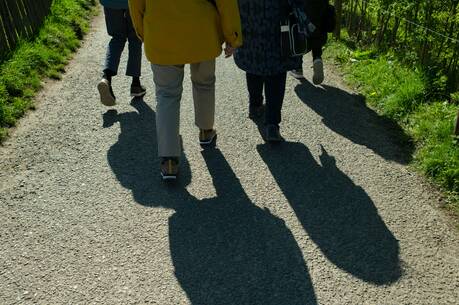We Can't Really Live Alone
It is not good for the man to be alone,” writes the author of Genesis. Nor is it good for the woman or the child. Our fundamental human need to bond with another is beyond question. We are told that newborns can die if they do not experience human touch. And even if they do not die, they may be psychologically scarred for life. Our identity, our sense of worth and the character of our maturity are all shaped by the quality of our deep bonds with significant others.
The creation story from which today’s reading is taken, as poetic in form as it may be, shows that the ancient Israelites were clearly aware of the importance of being joined one to another. The woman is made of the very substance of the man, bone of his bone, flesh of his flesh. Contrary to what some have believed, being made from a part of him does not make her inferior to him any more than the man, formed from the substance of the earth, is considered to be inferior to the earth. Rather, the character of her origin makes her one with him. They are bonded. She is a suitable partner (a much better rendering of the Hebrew word ezer than is the common translation, “helper”).
The man and the woman are bonded on several levels. They are of the same bone and flesh. In other words, they are equally human beings. But bone and flesh can be understood figuratively as well. “Bone” stands for strength and “flesh” stands for weakness; together they encompass the entire range of human characteristics (much like “A to Z” includes all the letters of the alphabet). It is because of this more comprehensive bonding that they are suitable partners. The most obvious expression of this bonding is marriage and the creation of a new family unit.
Marital bonding is a theme in the Gospel as well. Jewish law allowed divorce, and so the Pharisees’ questioning of Jesus was not a search for information. They were trying to trick him, to see if he would criticize the Mosaic tradition and thus place himself at odds with the people. Jesus was not caught in their trap; he did not find fault with Moses. Instead he acknowledged the tenuous nature of human bonding, and he pointed to divorce as a concession. He then reminded his hearers of the bond established between man and woman as found in the Genesis account.
Whether or not one agrees that in some situations divorce should be granted, one cannot but be saddened at the high instance of its occurrence. In some cases of divorce, the marital bond is severed; in others it may never really have been forged. Too often the bond does not even seem to be a serious consideration. This is tragic, because divorce lays bare the absence of a form of bonding that is so essential for human fulfillment and happiness.
The psalm expands the marital theme to include the children born of the union. This raises the issue of another kind of bonding, the bonding of generations. Each of us is a link between the past and the future. As parents bond with children, they hand on the heritage of the past; as children bond with parents, they open up to them the possibilities of the future. Children enrich our lives “like olive plants around your table.” No wonder the psalmist prays, “May you see your children’s children.” They are our way of looking into the future. And the way we bond with them is our way of influencing that future.
The Gospel’s picture of Jesus surrounded by children is so familiar to us that we may not realize how extraordinary it really is. In ancient Near Eastern cultures, children belonged to the world of women, not that of men. In the Bible, along with women and resident aliens, children generally represented vulnerability. Thus Jesus is depicted as welcoming them not only because they are endearing but also because they are vulnerable and in need of the protection of others. Then, as so often happens, he turns our perceptions inside out. The child, dependent on others for nurture and protection, is set before us as an example of how we are to stand before God—open and trusting,
The final example of bonding can be seen in the reading from the Letter to the Hebrews. Jesus became one of us, bone of our bone and flesh of our flesh. As one of us, he “tasted death for everyone.” He was not only the sacrifice, but also the high priest. Thus the writer could say: “He who consecrates and those who are being consecrated all have one origin.” We are now his brothers and sisters, bonded with him, and through him bonded with God. We are really not alone.
This article also appeared in print, under the headline “We Can't Really Live Alone,” in the September 29, 2003, issue.







